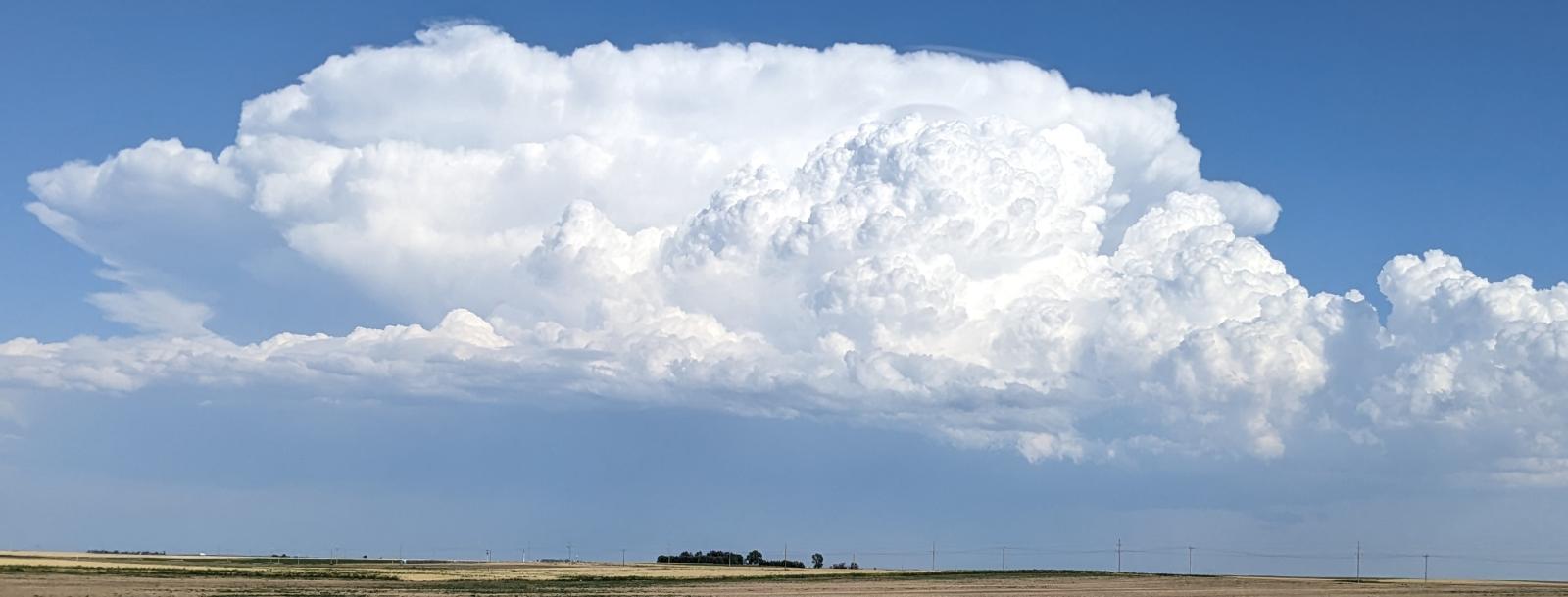Did you know that extreme heat is responsible for the highest number of annual deaths among all weather hazards? Two to three days of over 90-degree temperatures with high humidity is considered extreme heat (source: https://Ready.gov).
Outdoor events like county fairs, travel and ongoing clean-up associated with severe storms; can all be impacted by extreme heat conditions. Older adults, children and people with certain illnesses and chronic conditions are at greater risk from extreme heat.
The following resources can help you, your family and your community stay safe during periods of extreme heat!
Nebraska Extension News Articles:
- Climbing Temperatures and Fur Trade Weekend - Nebraska Extension
- Temperatures of 100 Degrees Plus Will Put Stress on Crops This week - Nebraska Extension
University Extension:
- Resources for Helping Cattle Deal with Heat Stress - UNL Beef.
- Managing Sheep and Goats for Heat Stress (G2355) - Nebraska Extension
- Providing Livestock Comfort at the County Fair - Ohio State.
- HotHog Smartphone App - Available in the Apple App Store and Google Play Store.
- Beat the Heat Resources - Missouri Extension.
Extreme Heat Resources - FEMA:
- Learn about extreme heat risks preparedness, safety and heat-related illnesses. Available in multiple languages. Go to https://www.ready.gov/heat or https://www.ready.gov/es/summer-ready
- Extreme heat social media toolkit with messaging and graphics in English and Spanish languages. Go to https://www.ready.gov/extreme-heat-safety-social-media-toolkit | Extreme heat graphics https://www.ready.gov/collection/extreme-heat
National Weather Service:
- Summer safety resources for social media, infographics, videos and more. Go to https://www.weather.gov/wrn/summer-safety.
Occupational Safety and Health Administration (OSHA):
- To help you gauge heat conditions and get safety information, you can download the OSHA-NIOSH Heat Safety Tool. This App is available for free download for both Android and iPhone devices. To access the Spanish version, set the phone’s language to Spanish. The App calculates heat index, risk levels and reminders on protective actions you can take. Go to https://www.osha.gov/heat/heat-app.
National Integrated Heat Health Information System
- This web portal provides tools and resources to help federal, state, and local entities reduce the health, economic, and infrastructural impacts of extreme heat. The site includes tools and mapping resources, identifies people at risk of extreme heat impacts and climate and health outlooks. Go to https://www.heat.gov/
U.S. Centers for Disease Control and Prevention:
- The dashboard on this site explores community heat exposure, related health outcomes and assets that can protect people during heat events. Go to https://ephtracking.cdc.gov/Applications/heatTracker/
National Institute of Environmental Health Sciences Worker Training Program
- NIEHS has published the guide "Building Blocks for a Heat Stress Prevention Training Program". The guide that creates awareness of heat risk and prevention of heat stress for anyone who is working in those conditions. Consider sharing with agriculture operations including farmers and ranchers to protect everyone from heat stress on the job. Link to the NIEHS website - https://www.niehs.nih.gov/ | Link to the guide - https://tools.niehs.nih.gov/wetp/public/hasl_get_blob.cfm?ID=14403
Nebraska Rural Response Hotline
800-464-0258
Floods, fires, storms, drought, and other natural disasters can have devastating and long-lasting effects on farm and ranch operations. The Rural Response Hotline can refer you to resources during these difficult times. To learn more about about available services and resources, call 800-464-0258 or visit the Rural Response Hotline Website
Hay and Forage Hotline
402-471-4876
The Nebraska Department of Agriculture has opened a “Hay and Forage Hotline,” to connect buyers with sellers of hay, pasture and other types of forage. This Hotline service is available to all buyers and sellers for free. The Department is providing this information as it has been given to us; listing of individual names does not in any way constitute an endorsement of anyone or their respective product. The Hotline is merely designed to be a clearinghouse of information for producers in need.
The hotline number is 402-471-4876. Sellers of available hay and forage can contact this number and have their name, contact information, and inventory placed on the “Sellers List,” which is updated regularly. The Nebraska Department of Agriculture will then make the “Sellers List” available to buyers by mail or by this web site. Once buyers obtain this information they will be responsible for contacting the sellers directly to negotiate any transactions.
